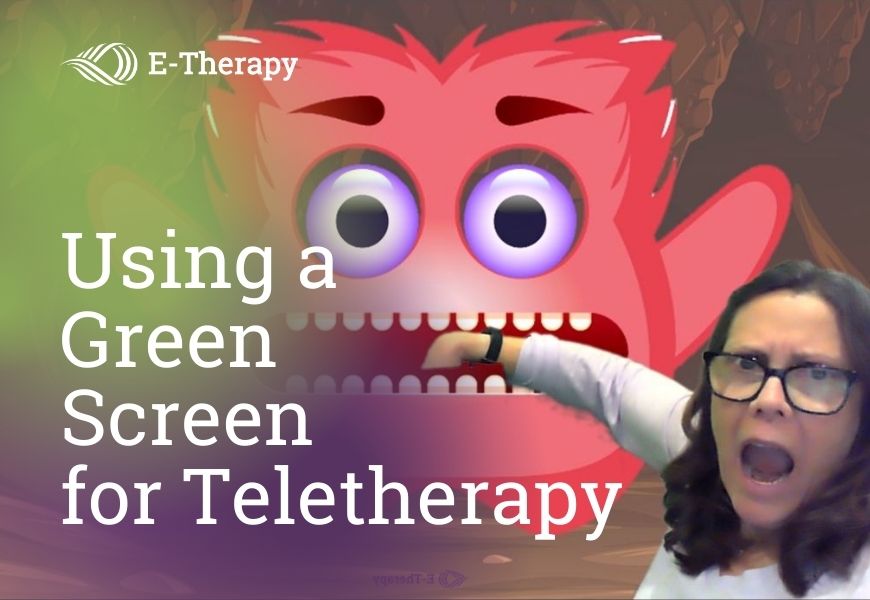 E-Therapy’s experienced – and highly creative – speech teletherapist, Diana Martin, has been impressing us on zoom calls for months with her amazing green screen backgrounds. In the first of a a few blog posts about using green screens in your online learning sessions, she shares some tips on making your own green screen backdrop. Let’s get to it!https://youtu.be/YAthYH12Rj4Using a green screen for teletherapy can expand a telepractioner’s instructional methods during virtual learning sessions. A green screen is a solid green curtain or shade that fills the space behind the presenter. Green screens provide a backdrop for any image file that the educator wants the learners to see in the background.
E-Therapy’s experienced – and highly creative – speech teletherapist, Diana Martin, has been impressing us on zoom calls for months with her amazing green screen backgrounds. In the first of a a few blog posts about using green screens in your online learning sessions, she shares some tips on making your own green screen backdrop. Let’s get to it!https://youtu.be/YAthYH12Rj4Using a green screen for teletherapy can expand a telepractioner’s instructional methods during virtual learning sessions. A green screen is a solid green curtain or shade that fills the space behind the presenter. Green screens provide a backdrop for any image file that the educator wants the learners to see in the background.
What kinds of instructional content can be used with a green screen?
Any activity that can be saved as an image file can be projected onto a green screen. This can include photographs and GIFs as well as images of worksheets, game boards, and PowerPoint slides. Understanding how green screens work can open up many creative approaches to lessons and can feel more like onsite instruction.
Why should I consider incorporating green screen activities into my teletherapy lesson plans?
Using green screen activities does not require screen sharing. The therapist appears larger on the screen and uses his or her hands to point and handle physical objects related to the lesson. Students, especially younger learners, are sometimes more motivated to direct their communication at the therapist. Also, using a green screen is enjoyable for therapists and students. Who wouldn’t have fun playing a big board game, feeding hungry animals, or searching for hidden surprises?
Can I make my own green screen?
Inexpensive green screens can be made from a green table cloth, a green fleece throw blanket, green fabric, green plastic, or even sheets of green paper taped to a wall. I used 3 yards of lime fleece, sewed a curtain rod pocket at the top, and hung the fabric like a shade on the wall behind my desk using a curtain rod and adhesive hooks. I used additional adhesive hooks on the sides to keep the fleece flat, stretch out the wrinkles, and remove shadows. I like that I can use my wall like a flannel board. I glued felt to the back of pictures and cards and which allows me to easily move them around my screen.
Tips for making your own green screen:
- Green screens need to be flat and as wrinkle-free as possible.
- Make sure your screen fills the background behind you as you stand or sit at your desk.
- Poor lighting can degrade the quality of the image on your screen. Make sure you can control light coming in through any windows in your room.
- Cover the back of your chair with green fabric so it blends into the background.
- Temporary adhesive wall hooks are handy for attaching a fabric screen to a wall.
Need activities for your teletherapy sessions?
Make sure to follow us on Facebook, so you’ll be the first to know! And check out all the activities here on our blog!
